Related Research Articles
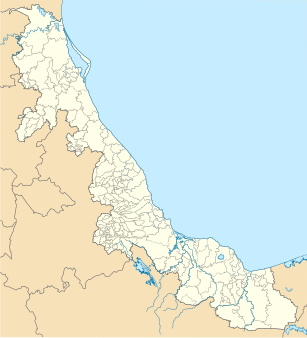
Xalapa or Jalapa, officially Xalapa-Enríquez, is the capital city of the Mexican state of Veracruz and the name of the surrounding municipality. In the 2005 census the city reported a population of 387,879 and the municipality of which it serves as municipal seat reported a population of 413,136. The municipality has an area of 118.45 km2. Xalapa lies near the geographic center of the state and is the second-largest city in the state after the city of Veracruz to the southeast.
The Ibero-American University is one of the most prestigious universities in Mexico. The private institution of higher education is sponsored by the Society of Jesus, and it is recognized as having an international-grade level of excellence. In 2009, the UIA received the SEP-ANUIES Prize as the best private university in Mexico. The Ibero's flagship campus is located in the Santa Fe district of Mexico City. It is ranked by QS World University Rankings as 701-750 worldwide and 7 in Mexico.
Education in Mexico has a long history. The Royal and Pontifical University of Mexico was founded by royal decree in 1551, a few months after the National University of San Marcos in Lima. By comparison, Harvard College, the oldest in the United States, was founded in 1636 and the oldest Canadian University, Université Laval dates from 1663. Education in Mexico was, until the twentieth century, largely confined to males from the urban and aristocratic elite and under the auspices of the Roman Catholic Church in Mexico.

The University of Talca is a Chilean university located in the cities of Talca, Curicó, Linares, Santa Cruz and Santiago. Its headquarters and largest campus are located in the city of Talca. It is part of the Chilean Traditional Universities, the Consortium of State Universities and the Group of Regional Universities of Chile.
This is an index of education articles.

The Universidad Autónoma de Guadalajara, commonly abbreviated to UAG or Autónoma, is a coeducational, independent, private university based in the Mexican city of Guadalajara. Established in 1935, it was the first private university and medical school in Mexico. The creation of the university was a conservative response to a more-left wing direction being taken in Mexico in public higher education at the time. It was first conceived with the name Universidad del Occidente, but would later be styled to Universidad Autónoma de Guadalajara (UAG).

The Universidad Tecnológica de México (UNITEC) is a private university located in Mexico City, and in the States of Guanajuato, Jalisco, México and Querétaro. It offers high school, bachelor, and postgraduate programs. Ignacio Guerra Pellegaud founded it in 1966 and since 2008 is part of the Laureate International Universities Network. The UNITEC has 10 campuses: Cuitláhuac, Marina and Sur in Mexico City; Atizapán, Ecatepec, Los Reyes, and Toluca in the State of Mexico; Leon in the State of Guanajuato; Guadalajara in the State of Jalisco; and Querétaro in the State of Querétaro. Additionally, it has an Online Campus. UNITEC total enrollment is higher than 90,000; more than 64,000 students are concentrated in the campuses of the Mexico City Metropolitan Area, which makes it the largest private university in this country region.

Robert Winton Mendenhall is a pioneer of educational technology and entrepreneurship best known as the former president of Western Governors University (WGU).
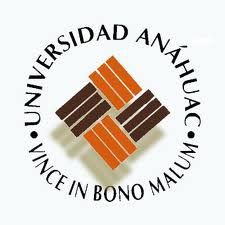
The Universidad Anáhuac México is a private educational institution of higher learning in Mexico, located on two campuses:

Universidad Veracruzana is a public autonomous university located in the Mexican state of Veracruz. Established in 1944, the university is one of the most important in the southeast region of México. Its academic organization is a structure based on academic areas, schools, education programs and research institutes. Due to geographic dispersing, academic activities are coordinated by the Academic Secretariat and four Vice-Rector's Offices. General Directions of the academic areas: Arts, Biology and Agricultural Sciences, Health Sciences, Economics and Business Administration, Liberal Arts and Technical coordinate as well each school and educational programs. The Department of Research coordinates the plans and activities of the research institutes, and the Direction of Art Dissemination operates the artistic groups and the cultural activities programs.
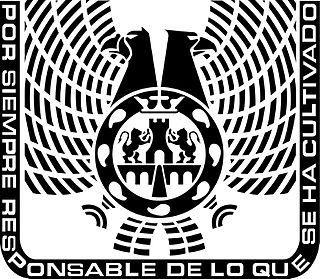
The Universidad del Valle de México or UVM is a private multicampus university founded in 1960 and one of the largest university systems in Mexico.
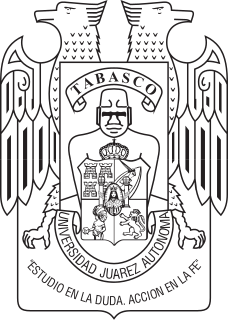
Universidad Juárez Autónoma de Tabasco is a public institution of higher learning located in Villahermosa, Tabasco, Mexico. The mission of the university is "to prepare professionals with broad and deep expertise in their area of study to fill the needs of Tabasco and the country at large." UJAT is the largest and most prominent university in the state of Tabasco. During the 2007-2008 academic year the university enrolled 35,271 students and had a teaching staff of over 2,000. For the same school year the university offered bachelor's degrees in 36 disciplines, master's degrees in 26 areas, three doctoral degrees, and post-graduate Certificates (Especialidades) in 17 graduate areas of specialization. The university grants law, education, management, engineering, medicine, architecture, nursing, and dentistry degrees, plus some 30 additional degrees in other fields of study.

Mario Garcia-Valdez is the Director of the National College of Technical Education (CONALEP) in the State of San Luis Potosi. During 2012-15, he served as Mayor of the City of San Luis Potosí San Luis Potosí, Mexico. Previously, he served as President of the Autonomous University of San Luis Potosí (UASLP) from 2004 to 2012. A lawyer, Mr. García has been a faculty member of UASLP since 1987. At UASLP he has served in various positions including Admissions Director, Vice President for Student Services, Legal Advisor to the Rector, and Secretary General of the University.

The Intercultural Open University Foundation (IOUF) is an international non-profit charitable organization that provides distance learning courses to master's and PhD students. IOUF offers dual degree programs in association with Universidad Azteca and its partner the Universidad Central de Nicaragua (UCN). Upon successful completion of the course, students are awarded with the Doctor of Philosophy, PhD degree in consortium with UAzteca and UCN.
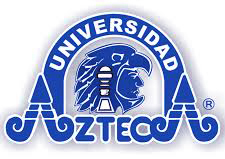
The Universidad Azteca is a private university in Chalco, Mexico in a community in Mexico State in the greater Mexico City area. Universidad Azteca is a private university with recognition of the Official Validity of Studies awarded by the Federal Secretary of Education (RVOE), accredited by the Federal Ministry of Education of the Republic and recognized by the Federal Government to provide higher education and award graduate and postgraduate university degrees. According to the Mexican Higher Education Laws, Universidad Azteca is authorized to offer study programs and award degrees with RVOE and offer autonomous programs and award academic degrees of the university. The study areas with RVOE (accreditation) are Administration Informatics; Architecture; Business Administration; Education Sciences; International Commerce; Law; Pedagogics; Psychology; Public Accounting. The University awards undergraduate Bachelor, graduate Master, postgraduate Master and Doctoral degrees in international programs in accordance with the Bologna Process and issues a Diploma Supplement. Universidad Azteca International Network System is the university extension, collaborating with other universities globally and branch campus facilities in Austria, Switzerland, United Arab Emirates, India.

Teodoro Cano Garcia is an artist from Papantla, Veracruz, Mexico who is best known for his mural work depicting the Totonac culture of his native region in northern Veracruz. Cano was discovered by Diego Rivera, who helped Cano as a youth enter the prestigious San Carlos Academy and then employed him as an assistant with the mural work being done at the Ciudad Universitaria in Mexico City. Cano painted his first solo mural in 1953, and since then has produced paintings, murals, sculptures, photography, book illustrations and more, including creating a high relief technique with a cement base. However, Cano is best known for his mural work which depicts and promotes the Totonac culture, and much of his work can be seen in his hometown, including a monumental sculpture of a Volador dancer overlooking the city. Cano also worked as an academic for over 36 years, recently retiring, but he continues to work as an artist based in Xalapa.
Wilbert James "Bill" McKeachie was an American psychologist. He served as president of the American Psychological Association, the American Psychological Foundation and the American Association of Higher Education. He was a longtime faculty member at the University of Michigan and the initial author of McKeachie's Teaching Tips: Strategies, Research, and Theory for College and University Teachers, a widely read book on college teaching that was first published in 1951 and more recently in its 14th edition in 2013.
The College of Education is one of 15 colleges at The Pennsylvania State University, located in University Park, PA. It houses the departments of Curriculum and Instruction, Education Policy Studies, Learning and Performance Systems, and Educational Psychology, Counseling, and Special Education. Almost 2,300 undergraduate students, and nearly 1,000 graduate students are enrolled in its 7 undergraduate and 16 graduate degree programs. The college is housed in four buildings: Chambers, Rackley, Keller, and CEDAR Buildings.
Lini M. De Vries, born Lena Moerkerk in Prospect Park, New Jersey, was a Dutch–American author, public health nurse, and teacher. She worked as chief of American Hospital Number 3 on the Madrid-Valencia Road during the Spanish Civil War and later organized health clinics in New Mexico, California, and Puerto Rico. She moved to Mexico in 1949 after her membership in the Communist Party was exposed. In Mexico, De Vries taught medicine and public health to indigenous villagers in the Papaloapan River Basin in Oaxaca; taught anthropology and public health at the University of Veracruz; was a founder of CIDOC, a religious, educational and cultural school; and helped found Cemanahuac, an educational community in Cuernavaca, Mexico.
Adolfo Mota Hernández is a Mexican politician from the Institutional Revolutionary Party. He serves as a federal deputy in the LXIII Legislature of the Mexican Congress representing the eighth federal electoral district of Veracruz, based in the capital city of Xalapa.
References
- ↑ (Carrera Magisterial, SEP, 2011-2012-2013); and a proposal for University-Based Community Service, Foreign Debt Relief and Sustainable Development. Service Enquiry: Exploring the experience of service and volunteering around the world, vol. 1. The Global Service Institute.